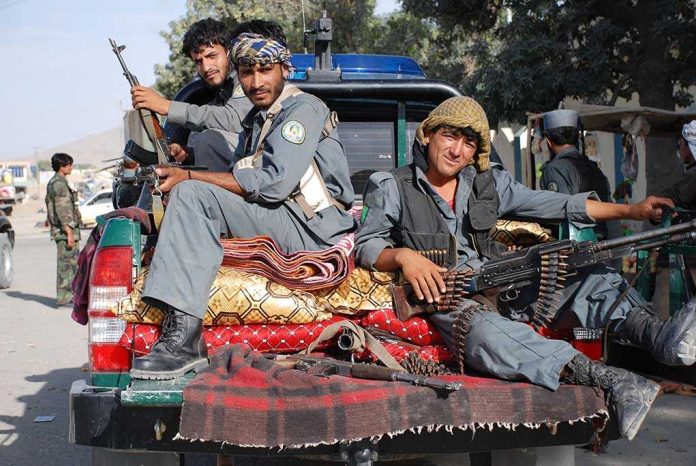
When the cricket field becomes a war zone, even national pride cannot shield the players—Afghanistan’s loss of three cricketers to a cross-border airstrike is a tragedy that shakes the very soul of sport in a conflict-ridden world.
Story Snapshot
- Three Afghan cricketers killed in Pakistani military airstrike, marking an unprecedented attack on athletes.
- Afghanistan withdraws from a major international tournament, escalating diplomatic tensions in South Asia.
- ICC and BCCI publicly condemn the attack, amplifying international scrutiny and outrage.
- The incident spotlights the vulnerability of athletes in conflict zones and challenges cricket’s role as a unifying force.
Cricket Interrupted by Conflict: The Anatomy of a Tragedy
On October 17, 2025, the gentle thud of a cricket ball in Paktika province was shattered by the roar of a Pakistani airstrike. The deaths of Kabeer Agha Argon, Sibghatullah Zirok, and Haroon—three cricketers returning from a friendly match—sent shockwaves through Afghanistan’s cricket community and beyond. This was not an attack on soldiers or politicians, but on athletes whose only armor was their shared love for the game. The Afghanistan Cricket Board responded with swift condemnation and an immediate withdrawal from the upcoming Twenty20 tri-series in Pakistan—a move that transformed a personal loss into a geopolitical statement.
The international reaction was swift and unambiguous. The ICC described the incident as “deeply saddened and appalled,” a phrase that echoed through global headlines. The BCCI, cricket’s most powerful governing body, didn’t mince words, calling the airstrikes “cowardly” and aligning itself with Afghanistan in protest. These statements weren’t just formalities; they were signals that cricket, often seen as a bridge across regional divides, had become collateral in a broader conflict. For fans and players alike, the message was clear: the pitch is no longer neutral ground.
The Border, the Ball, and the Burden of History
Afghanistan’s border with Pakistan has always been more than a line on a map. Skirmishes, military operations, and mutual suspicion have shaped daily life, with civilians often caught in the crossfire. Cricket emerged as an unlikely sanctuary, growing from refugee camps to international stadiums—a testament to Afghan resilience. The deaths in Paktika are unprecedented: previous threats to athletes came from militant groups, not targeted military strikes. This attack is a chilling escalation, making every boundary rope and pavilion a potential flashpoint.
“Operation Sindoor,” the Pakistani military campaign cited in some reports, contextualizes the airstrike as part of ongoing operations to secure the border. Yet, the targeting of athletes—whether deliberate or collateral—raises uncomfortable questions about the sanctity of sport. Afghanistan’s withdrawal from the tri-series isn’t just about safety; it’s a demand for recognition that cricket must remain above the fray, even when the world refuses to play by those rules.
International Outrage, Local Grief: The Fallout for Cricket
For Afghanistan, cricket has been more than entertainment—it’s a source of national identity and hope. The deaths of these players have torn at the fabric of that hope, leaving families and communities in mourning. Economic repercussions quickly followed; canceled matches mean lost sponsorships and diminished opportunities for young athletes. Socially, the loss of role models reverberates through Afghan society, where every cricketing success has symbolized progress against the odds.
Diplomatically, India’s vocal support for Afghanistan amplifies the incident’s impact. The BCCI’s condemnation not only reflects solidarity but also increases pressure on Pakistan, isolating it further within the cricketing world. The ICC’s role as an international referee is put to the test—calls for policy reviews and heightened player security are likely, but the organization’s limited enforcement power means real change will require collective will. Meanwhile, no official response from the Pakistan Cricket Board or military leaves a vacuum that only intensifies speculation and mistrust.
Sport, Sovereignty, and the Unanswered Questions
The deaths of Argon, Zirok, and Haroon expose the fragility of sporting sanctuaries in conflict zones. In the short term, Afghanistan’s withdrawal disrupts the international cricket calendar and heightens regional tensions. Long-term consequences may include reluctance by international teams to tour South Asia, increased scrutiny on athlete safety, and a chilling effect on sports development in unstable regions. For Afghan youth, the loss is personal and profound—the field that once promised glory now carries the shadow of war.
While the facts are confirmed by major news agencies, discrepancies remain in casualty figures, with some reports suggesting higher numbers. The absence of a Pakistani response and the dominance of Afghan and Indian narratives highlight the complexities of reporting in conflict. What’s certain is that cricket, once a symbol of peace, now stands as a somber witness to the costs of unresolved conflict—leaving fans, players, and policymakers searching for answers in the silence after the last ball is bowled.













